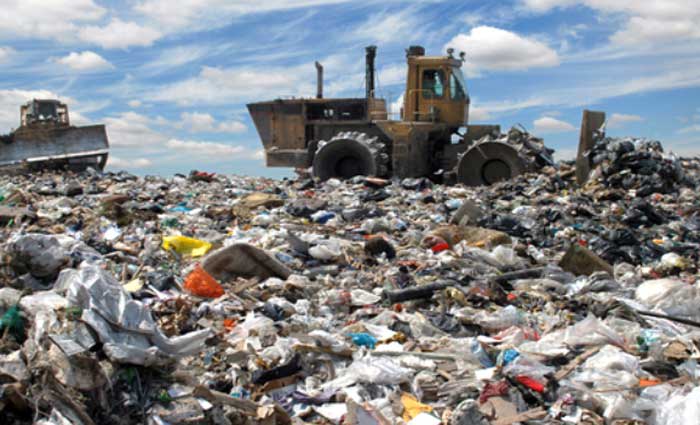Capturing the true wealth of Australia’s waste
![]()
GUEST OBSERVER
One of the byproducts of landfill is “landfill gas”, a mixture of mostly methane and carbon dioxide generated by decomposing organic material.
Methane is a particularly potent greenhouse gas, but it can be captured from landfill and used to generate clean electricity.
Methane capture is a valuable source of power but, more importantly, it can significantly reduce Australia’s methane emissions. However the opportunity to produce energy from waste is largely being squandered, as up to 80% of the potential methane in waste is not used.
If more councils were prepared to invest in better facilities, Australians would benefit from less waste in landfill and more energy in our grids. Even the by-product from using state-of-art processing methods can be used as a bio-fertiliser.
And while these facilities are initially more expensive, Australians are generally very willing to recycle, compost and take advantage of community schemes to reduce waste. It’s reasonable to assume that a considerable percentage of our population would support updating landfill plants to reduce methane emissions.
Recycling in Australia
Australia may have a bad rap when it comes to waste recycling, but there are plenty of positives.
Australians produce approximately 600 kilograms of domestic waste per person, per year – no more than most northern European countries, which set the benchmark in sustainable waste management.
Looking at kerbside bins we, on average, recycle 30-35% of that waste, saving much of our paper, glass, aluminium and steel from landfill (which also saves and reduces emissions).
Although the household recycling rate in Australia is less than the best-performing EU recycling rates of 40-45%, this is primarily due to a lack of access to (or awareness of) schemes to recycle e-waste and metals. Data therefore suggests that at the community level, there is a willingness to minimise and recycle waste.
Between 55% and 60% of kerbside waste sent to landfill in Australia is organic material. Over 65% of this organic fraction is food waste, similar to the make-up of the EU organic waste stream, comprised of 68% of food waste.
Despite this large fraction, approximately half of the household organic we produce – mostly garden waste – is separately collected and disposed, again demonstrating high participation by the community in recycling when collection and disposal options are available.
Turning waste into energy
Energy recovery from waste is the conversion of non-recyclable material into useable heat, electricity, or fuel. Solid inorganic waste can be converted to energy by combustion, but organic waste like kitchen and and garden refuse has too much moisture to be treated this way.
Instead, when organic waste is sent to landfill it is broken down naturally by microorganisms. This process releases methane, a greenhouse gas 25 times more potent than carbon dioxide.
Around 130 landfills in Australia are capturing methane and using it to generate electricity. Based on installed power generation capacity and the amount of waste received, Australia’s largest landfills use 20-30% of the potential methane in waste for electricity generation.
Ravenhall in Melbourne processes 1.4 million tonnes of waste per year, and proposes to generate 8.8 megawatts (MW) of electricity by 2020. Roughly 461,000 tonnes of waste goes to Woodlawn in NSW, and in 2011 it generated 4MW of electrical power. Swanbank in Queensland receives 500,000 tonnes a year and generates 1.1MW.
The remainder of the methane is flared due to poor gas quality or insufficient transmission infrastructure, is oxidised as it migrates towards the surface of the landfill, or simply escapes. The methane generating capacity of waste is also diminished because organics begin composting as soon as they reach landfill.
But there are more efficient ways to capture methane using specialised anaerobic digestion tanks. The process is simple: an anaerobic (oxygen free) tank is filled with organic waste, which is broken down by bacteria to produce biogas. This is similar to the natural process that occurs in landfill, but is much more controlled and efficient in a tank.
The biogas can be combusted to produce electricity and heat, or can be converted to pure biomethane to be used either in the mains gas grid, or as a renewable transport fuel. In contrast to landfills, 60-80% of the methane potential of waste is used to generate electricity in anaerobic digesters, with most of the remainder used to power waste handling and the digestion process.
The nutrient-rich sludge that remains after anaerobic digestion, called digestate, is also a valuable biofertiliser. It can support food production, and further reduce greenhouse gases by decreasing our reliance on energy-intensive manufactured fertilisers.
The use of food waste as a feedstock for anaerobic digestion is largely untapped in Australia but has huge potential. A site in Sydney’s geographic centre (Earth Power Technologies) and Richgro’s Jandakot facility near Perth are part of a handful that are converting food waste to energy using this technology.
The future of organic recycling
Local council recycling and waste infrastructure is typically not a priority election issue, except for those close to existing or proposed landfills.
Ratepayers are generally not informed of the possibility of separately collecting food waste, either for industrial-scale composting or methane capture. We have the right to this information, with costs and benefits presented in the context of the costs we already pay for waste management, and relative to the environmental performance of landfill.
As an example, landfill operators often promote the number of homes they power by electricity generated from methane as a key measure of sustainability. But how does this compare to the electricity and heat that might be obtained from an anaerobic digester that processes the same waste?
Given the choice, the Australian community may have an appetite to extend organic recycling beyond well-established garden waste composting. They only have to be asked.
rofessor of waste management, The University of Queensland.
Associate Professor and Principal Scientist, University of Southern Queensland.
Both are authors for The Conversation.
